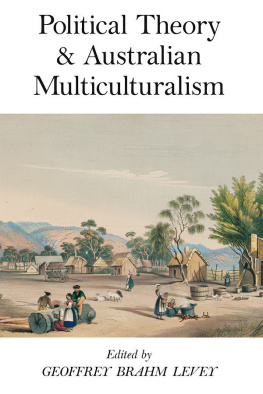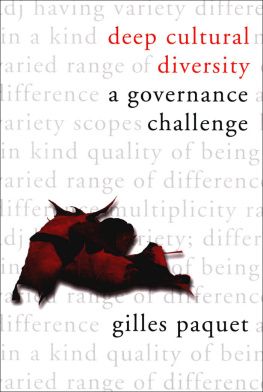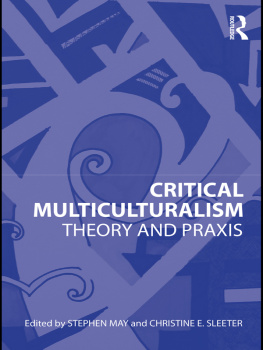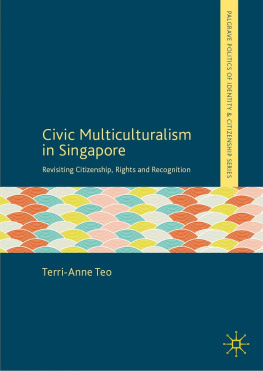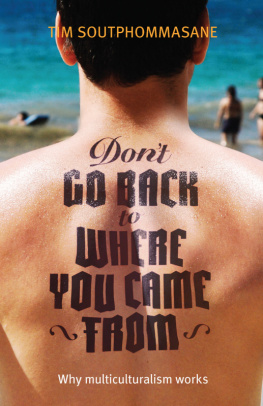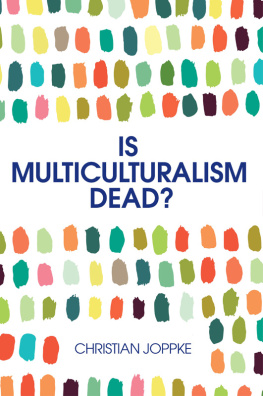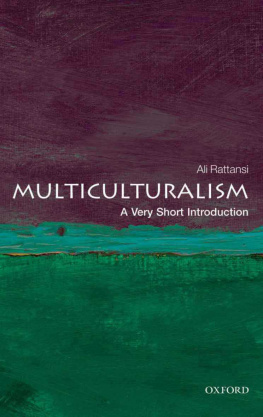Praise for
Home and Native Land
This book compels readers to interrogate the regulatory forces of multiculturalism from various historical and contemporary, activist, disciplinary, and theoretical lenses. It invites and provokes readers to consider alternatives to current hegemonies, and should be read by both critics and supporters of multiculturalism.
Rita Kaur Dhamoon, Department of Philosophy & Political Science, University of the Fraser Valley, and author of Identity/Difference Politics
A critical collection that makes a significant contribution to current discussions about multiculturalism as policy and discourse in Canada. This book develops the important idea that the organization of difference and belonging in Canada is an ongoing colonial project that requires the regulation of indigenous peoples, lands, and racialized others under a national narrative of white settler multiculturalism.
Eve Haque, Department of Languages, Literatures and Linguistics, York University

Home and Native Land: Unsettling Multiculturalism in Canada
2011 May Chazan, Lisa Helps, Anna Stanley, and Sonali Thakkar
First published in Canada in 2011 by
Between the Lines
401 Richmond Street West
Studio 277
Toronto, Ontario M5V 3A8
Canada
1-800-718-7201
www.btlbooks.com
All rights reserved. No part of this publication may be photocopied, reproduced, stored in a retrieval system, or transmitted in any form or by any means, electronic, mechanical, recording, or otherwise, without the written permission of Between the Lines, or (for photocopying in Canada only) Access Copyright, 1 Yonge Street, Suite 1900, Toronto, Ontario, M5E 1E5.
Every reasonable effort has been made to identify copyright holders. Between the Lines would be pleased to have any errors or omissions brought to its attention.
Cataloguing data available from Library and Archives Canada.
ISBN 978-1-771130-28-8 (epub)
ISBN 978-1-897071-61-8 (print)
ISBN 978-1-771130-29-5 (PDF)
Cover image: Three Sisters, preparatory sketch for mural, pencil and digital media, Anders Swanson, 2006.
Cover design by Jennifer Tiberio
Text design and page preparation by Steve Izma
Between the Lines gratefully acknowledges assistance for its publishing activities from the Canada Council for the Arts, the Ontario Arts Council, the Government of Ontario through the Ontario Book Publishers Tax Credit program and through the Ontario Book Initiative, and the Government of Canada through the Canada Book Fund.

Contents
May Chazan, Lisa Helps, Anna Stanley, and Sonali Thakkar
Rinaldo Walcott
Glen S. Coulthard
George Elliott Clarke
Grace-Edward Galabuzi
Nandita Sharma
Margaret Walton-Roberts
Brian Egan
Emilie Cameron
Laurie K. Bertram
Natasha Bakht
Uzma Shakir
Acknowledgements
W E ARE GRATEFUL TO the Pierre Elliott Trudeau Foundation for generously sponsoring the 2007 conference, From Multicultural Rhetoric to Anti-Racist Action, where the idea for this volume took root. Particular thanks are due to Bettina Cenerelli, Jose St. Martin, and Maya Jegen. We also appreciate support for the conference from the Association for Canadian Studies, and thank all panellists and participants for engaging in provocative discussions that opened up a space for this volume to emerge.
Numerous fellow Trudeau Foundation community members have been important interlocutors throughout, especially James Tully, Constance Backhouse, Jillian Boyd, D. Memee Lavell-Harvard, Marie-Joie Brady, Lisa Freeman, Kate Hennessy, Rod MacDonald, and Kevin Chan. The staff at Between the Lines have been supportive at every stage of this book and we are especially grateful to BTL editor Amanda Crocker, who guided us through the process of turning an idea into a book, and to our copyeditor Andrea Kwan, whose efforts far exceeded what any of us imagined under the purview of copyediting, and whose thoughtful suggestions greatly improved the volume. This book would be greatly diminished without Anders Swansons wonderfully evocative artwork on the cover. We thank him for his kind permission to use it, and for his interest in this project, and are grateful to contributor Laurie Bertram, who proposed the image in the first place. This volume owes its existence to the contributors and their dynamic critical interventions: what a pleasure it has been to work with each of them. Sonali, Lisa, and May thank their dissertation supervisors Marianne Hirsch and Joseph Slaughter, Franca Iacovetta, and Mike Brklacich, respectively. May also thanks Ben and Zoe, and Anna expresses her gratitude to Phil.
Most importantly, we thank each other. This volume has been a truly collaborative process. During the time it took for this book to be born, one of us has had a baby, one got a job in Ireland, one moved between New York and various cities in Germany, and one was engaged in the creation of various social enterprises on the west coast of Canada. Yet despite our disparate lives, we have maintained a shared vision and a cohesive and fun working relationship.
Introduction: Labours, lands, bodies

May Chazan, Lisa Helps,
Anna Stanley, and Sonali Thakkar
T HE ACT OF UNSETTLING HAS MANY IMPLICATIONS not only for the aims of this book, but also for the very shape of multicultural discourse in Canada over the past thirty-plus years. Since the advent of official multiculturalism in 1971, under the Trudeau governments policy of multiculturalism within a bilingual framework, Canada has achieved what may appear to be a multicultural consensus. There is agreement among politicians and citizens that some version of multiculturalism whatever its limitations is here to stay, lodged deeply at the heart of Canadas national identity both at home and abroad. To unsettle multiculturalism would entail disrupting what seemed, at least for a while, downright commonsensical.
However, like other scholars and activists before us, we are convinced that the meaning of multiculturalism is not, and never has been, fully settled. One of the oldest meanings of unsettled, according to the Oxford English Dictionary, is that which is not (yet) quietly or firmly established. The parenthetical yet is telling. It indicates both a desire to achieve consensus, thereby settling the debate and fixing meaning, as well the difficulty of doing so. At the same time, we note that in Canada, particularly, multiculturalism is itself a politics of settlement a story tied closely to the appropriation and settlement of space and meaning, and to securing the material and symbolic contours of the state. One of our ambitions for this volume is that it should unsettle multiculturalism while simultaneously showing how multiculturalism is continuously being unsettled. As Rinaldo Walcott notes, official multiculturalism is not static; the state has regularly revised the policy and its rhetoric in accordance with competing ideas about the work multiculturalism should do.



